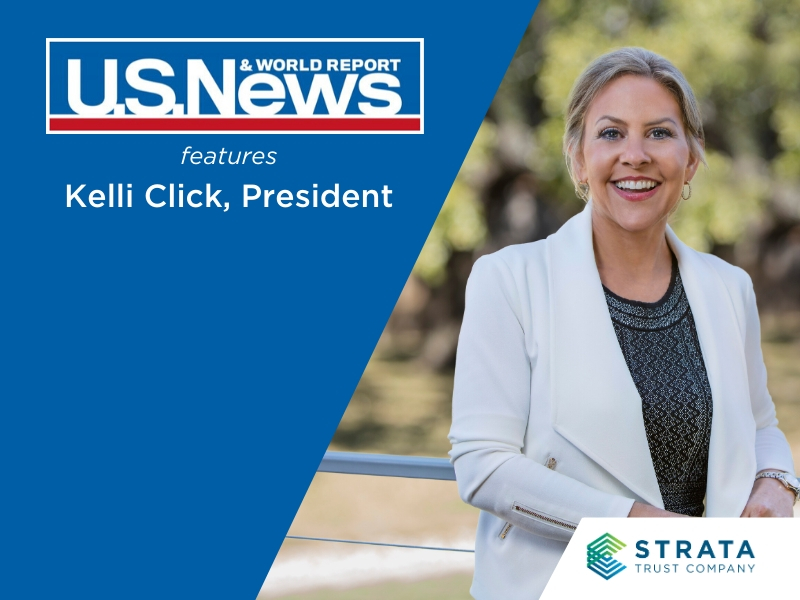Article originally published in U.S. News & World Report by contributor Rebecca Lake –
“Buy and hold” is a popular investing strategy that can also be applied to real estate.
Purchasing a rental property or other investment property for the long term can yield multiple benefits.
“Rental properties, such as multifamily units, offer investors rental income and asset appreciation at the same time,” says Christopher Dixon, a managing partner at Oxford Advisory Group.
Owning real estate that generates continuous cash flow can add diversity to your portfolio as well as an income stream that could see you through to retirement and beyond. There’s also the potential for more stability versus short-term, fix-and-flip property investments.
“A buy and hold strategy helps protect investors from housing price fluctuations when selling the property for a quick profit,” Dixon says.
When you’re looking at a decades-long investment, rather than one that may last a year or less, time is on your side for riding out housing market ebbs and flows. And real estate’s low correlation to stocks means your investment may continue to fare well during periods of widespread volatility.
In a sense, investing in buy-and-hold real estate isn’t that different from investing in the stock market, says Michael Morgan, president of TBS Retirement Planning in Bedford, Texas.
“With real estate, you’re buying property and holding it with the anticipation of it going up in value,” Morgan says. “Like picking stocks, you want to pick good properties.”
Knowing how to pick good properties is pivotal to developing your rental property investing approach. If you’re interested in buy-and-hold real estate, keep these rules in mind:
• Start with your exit strategy.
• Consider leveraging your individual retirement account.
• Gauge a property’s potential.
Start With Your Exit Strategy
Focusing on your exit strategy first might seem backward, but it’s a sound approach to take when considering real estate as a buy-and-hold investment, says Eric Swanson, vice president at EP Wealth Advisors in Torrance, California.
“With any long-term investment, the market prices will fluctuate,” Swanson says. “If the investor is experienced enough, they’ll have a proper exit strategy in place before buying the property.”
You should consider how long you plan to hold a property before you scout out locations or rental markets in which to invest. This can be a crucial step.
Swanson says investing in smaller, more affordable properties can create a larger buyer’s market, which is advantageous for investors when it’s time to sell. But choosing a property based on affordability alone doesn’t necessarily make it a good investment.
Developing an exit plan early on can also help you determine if buy-and-hold property investments are a good fit for your portfolio and investment style.
“When buying properties, one should always be prepared to become a landlord,” Morgan says, which means staying in the game through thick and thin.
“What if the property is not bringing the price to turn a profit? What if the real estate market collapses like it did in 2007? If you’re not prepared to be a landlord, investing in real estate may not be for you,” he says.
Leverage Your IRA
Rather than taking out a loan to purchase a rental property, you could tap your retirement assets through a self-directed IRA. This type of IRA allows you to direct your investment choices beyond stocks and bonds to real estate and other alternative investments.
“Investors may use their retirement funds to invest in undeveloped land, income-producing property, residential homes or even commercial buildings, all while assuming a buy-and-hold strategy,” says Kelli Click, president of STRATA Trust Company.
But it pays to be smart about how you do it; otherwise, you could potentially trigger negative tax consequences.
“In most cases, the IRA must have a sufficient balance available to cover ongoing expenses, like taxes and repairs,” Click says.
More importantly, you’re not allowed to live in or use the property, nor can you benefit from any “sweat equity” associated with personally improving or maintaining the property. You also can’t pay yourself a salary to act as the property manager.
These kinds of activities fall under the umbrella of self-dealing, which is an “IRS no-no.” But assuming you follow the rules, using your IRA to invest in buy-and-hold real estate could allow you to reap cash flow and appreciation benefits, alongside tax benefits.
Gauge a Property’s Potential
As with any investment, it’s important to crunch the numbers before pursuing a real estate investment to generate cash flow. For example, Dixon says investors should be looking for properties they can purchase at a discount while also considering location.
“Investors should be looking for income-producing properties and slightly distressed properties,” he says. And when it comes to the location, it’s all about traffic.
“You’re looking at traffic patterns; the more traffic, the better,” Dixon says. “No traffic means no tenants.”
Purchasing properties at market value is a costly mistake to avoid, as is not looking at the bigger housing picture in a particular market.
“Investors should look at the community housing growth percentage year over year,” Dixon says. “You want to see a positive growth percentage of people moving into the area instead of outside.”
That’s an indicator that a property investment could be a good fit to buy and hold if growth is steadily trending up.
Final Takeaway
Last but not least, it’s important to make sure you’re working with the right people when getting into the long-term investment property game.
“One of the biggest mistakes I’ve witnessed is investors not using professionals at every turn of the buying or selling process,” Swanson says.
He says you could be setting yourself up for failure if you don’t have the right people in the right corners when making a long-term investment in rental property. That includes having a real estate agent or broker, general contractor and a real estate attorney at hand. Your financial advisor can also play a part in helping to guide your property investment decisions.
Bottom line, there are too many moving parts involved in buying property, Swanson says. Having a team behind you can help ensure your long-term investment success.







